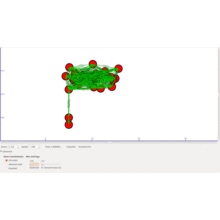NS3 SIMULATOR PROJECT TITLE
Secure and efficient routing by Leveraging Situational Awareness Messages in tactical edge networks
A desired capability in military operations is the reliable and efficient sharing of Situational Awareness (SA) data at the tactical edge network. Many implementations of SA sharing in the literature use frequent broadcasts of SA messages in order to provide an up-to-date and comprehensive operating picture to all nodes. However, SA sharing may result in an increase in bandwidth requirements at the tactical edge, where power and bandwidth are scarce. Efficient realtime routing is also a challenge in a tactical edge network. We believe there is a good opportunity to leverage the realtime periodic SA messages for assisting routing services. To the best of our knowledge, little research has been done on this front. In this paper, we propose a secure and efficient routing by leveraging SA messages (SER-SA) in tactical edge mobile ad hoc networks.
The SER-SA protocol utilizes realtime broadcast SA messages to not only transmit SA data but also to facilitate Multipoint Relay (MPR) node selection and route discovery for providing both realtime broadcast and unicast communication services. In SER-SA, broadcast forwarding is performed only by MPR nodes, which can reduce bandwidth usage compared to pure flooding methods such as Multicast Ad hoc On-Demand Distance Vector Routing (MAODV). In addition, we reduce bandwidth usage even further by both avoiding dissemination of specific designated routing messages in the network and enhancing the (traditionally local) MPR selection algorithm based on a global algorithm enabled by the shared global SA. We show through simulations that the proposed SER-SA protocol facilitates route discovery in a more bandwidth efficient manner. As a result, it performs better in terms of delivery ratio for providing both broadcast and unicast services in tactical scenarios compared to the existing MANET multicast routing protocols such as Multicast Optimized Link State Routing and MAODV.

 Click Here to watch our latest output video using NS3 simulator
Click Here to watch our latest output video using NS3 simulator  Click Here to watch our latest projects screenshots using NS3 simulator
Click Here to watch our latest projects screenshots using NS3 simulator